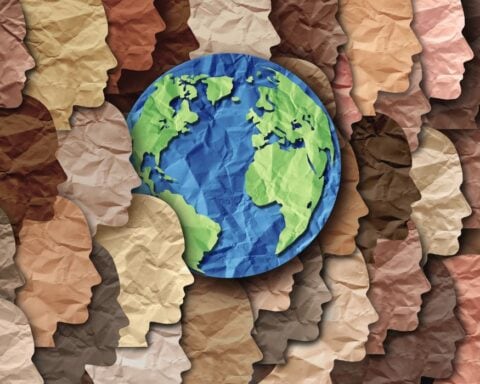The marine life in our oceans is being slaughtered.
Since 1990, we have lost 90% of large fish, such as sharks, tuna, swordfish, marlin, groupers and cod, according to scientists in the Future of Marine Animal Populations program. Using highly sophisticated equipment, fishing fleets have taken so much life from the ocean over the years. We are the ultimate predator, attacking prey in the ocean at up to 14 times the rate of other predators.
On December 19, governments from 188 countries reached an agreement at COP15 in Montreal to protect 30% of land and oceans by 2030. While this is a significant achievement, given negotiators were at loggerheads a few days earlier, this is just the beginning of efforts to restore and protect our oceans. Here are seven ways governments can ensure that life in the world’s oceans can thrive.
1. Put 30% target into action
The great thing about marine areas that exclude all fishing, dredging and bottom-trawling is how abundant they become with life. Nature bounces back quickly. A 2018 meta-analysis shows that compared to non-protected waters, such reserves have six times more biomass of fish and 15 times more sharks. Marine organisms are also reportedly 28% bigger.
Protected areas seed the nearby ocean with increased fish and biodiversity, making life easier for local fishers. They become the mothers of ocean abundance, just as large old trees become the mother trees of the forest. In the Caribbean, when marine reserves closed 35% of St. Lucia’s waters, National Geographic’s Pristine Seas project reports that within five years fish catches around the reserve increased by between 45% and 90%. When Cabo Pulmo in the Gulf of California, Mexico, became a no-take marine park, the village became a tourism and diving mecca and the adjacent waters saw a 463% increase in marine biomass within 10 years.
The goal that negotiators agreed to at COP15 (to protect 30% by 2030) is a scientific target, not a political one. And it’s one that will take meaningful, swift action to reach. Only 2.7% of the world’s oceans is highly protected, according to a 2021 study. Less than 1% of Canada’s territorial waters are highly protected from fishing, according to the Marine Conservation Insitute. But the federal government said last summer it had protected 10% of its marine and coastal territory.
2. Appreciate the economics of marine reserves
Fishing communities tend to start with the assumption that creating a marine reserve will destroy their livelihoods, but the data might surprise them. In the Cabo Pulmo marine reserve in Mexico, the spectacular recovery and a flourishing diving industry has made the local community quite wealthy. Off Australia, the Great Barrier Reef Marine Park has generated 36 times more revenue than was previously gained from commercial fishing, according to Enric Sala, the director of the Pristine Seas project. Studies show that if we protect 29% of the global ocean, we could preserve two-thirds of all possible biodiversity benefits, and increase the annual global fish catch by 8.3 million tons, while eliminating 27% of the carbon emissions caused by bottom trawling.
3. End all fishing in the high seas
The high seas are all the ocean area outside the 200 nautical miles of territorial waters that nations claim as their own. It yields just 4% of the global fish catch, mostly for gourmet dishes such as tuna sashimi and shark fin soup. Sala and his team at Pristine Seas have analyzed the high seas fishing fleets using satellite technology and calculated their costs and revenues. Most are profitable but depend on forced or slave labour and receive US$4 billion in annual subsidies from governments. If the human rights abuses and subsidies were to end, half of the fisheries would not be profitable, Sala’s work has found. If the world’s nations were to craft a treaty to end most high seas fishing, they could create a High Seas Reserve that would cover much of the global ocean.
4. Ban bottom trawling and deep-sea mining
Bottom trawling has been compared to dragging a massive net across the Serengeti National Park, killing everything. It disrupts or destroys all life on the ocean floor, including corals, anemones, sponges and urchins. It crushes soft-bodied animals such as worms, amphipods, clams, crabs and lobsters, and it leaves behind a barren area that can take years to recover.
Species fishers aren’t targeting animals, such as sharks, turtles and dolphins, which are thrown back into the sea as bycatch. Bottom trawling is happening in Canadian waters, too. In Europe, Greenpeace crews have been dropping boulders into the North Sea and the English Channel to try to stop the trawlers from destroying the sea-bed. It needs to end.
Deep-sea mining is also disastrous for biodiversity. The International Seabed Authority has issued 31 licences for deep-sea mineral exploration, covering an area twice the size of France, and it is getting ready to receive applications for much more. This is despite an urgent warning from 600 scientists who have called for a pause because of the loss of unique and ecologically important species and populations that would result from the degradation and destruction of seafloor habitat. They want a cast-iron commitment from global leaders that they will protect the ocean, top to bottom.
5. End the harmful fisheries subsidies
Every year, governments give US$35 billion in fisheries subsidies, $20 billion of which researchers say are harmful, supporting vessels that would otherwise be unviable, mostly from Europe, the United States, Japan and China. These subsidies have enabled them to sail farther and harvest more fish. Small-scale and artisanal fisheries employ 90% of all fishers, but the subsidies fund the big fleets. The responsibility to end the subsidies rests with the World Trade Organization. The Stop Funding Overfishing coalition, which represents 182 non-governmental organizations, is leading the campaign to end these subsidies.
6. Protect territorial waters fisheries
The territorial waters within 200 nautical miles of land generate 96% of the world’s catch. To protect these areas, one solution might be to establish local ocean trusts that are accountable to nature and future generations, giving non-fishers a majority on their governing boards with a duty to ensure that the inshore marine ecosystem remains healthy. The marine property rights would be placed with the trust, and local and Indigenous fishers would be invited to organize cooperatives to manage the coastal fisheries on behalf of their communities.
7. Teach all children to appreciate the oceans
For most people, the ocean is a realm we know almost nothing about. And our ignorance has let the long-liners, bottom trawlers and pair trawlers do such damage. If schools and parents accepted the challenge to inspire all children about the beauty and abundance of the ocean and teach them about the wounds inflicted by humans that are destroying marine life, we would have a better chance at saving it, enabling nature to recover.
Guy Dauncey is the author of Journey to the Future: A Better World is Possible.





